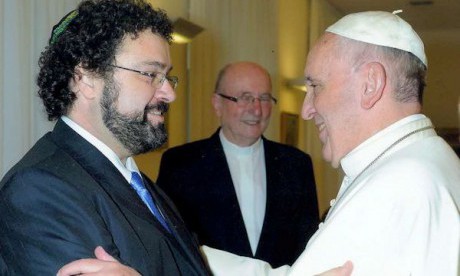Fifty years ago this Wednesday, the Vatican issued a declaration that established a new rapport between Jews and Catholics.
On the eve of this anniversary, the Anti-Defamation League — founded to protect Jewish lives and rights — called the Church’s approval of Nostra Aetate “arguably the most important moment in modern Jewish-Christian relations.” How so?
Q: What does “Nostra Aetate” mean?
A: It means “In Our Time.” They are the first words of the declaration, which was written during the Second Vatican Council, the most far-reaching reform effort of the Roman Catholic Church in centuries.
The document’s English title: “Declaration on the Relation of the Church to Non-Christian Religions.”
In the fourth of its five sections, Nostra Aetate focuses in on the relationship between Jews and Catholics.
By the way, the entire declaration is a quick read — little more than a page long.
Q: Yeah, but could I have the Cliff Notes version?
A: Nostra Aetate draws a poetic connection with Jews, describing them as the “well-cultivated olive tree onto which have been grafted the wild shoots, the Gentiles.”
Crucially, it rejects the charge that the Jewish people are responsible for Jesus’ death, an accusation used for centuries to justify the persecution of Jews.
The document reads: ” . . . what happened in His passion cannot be charged against all the Jews, without distinction, then alive, nor against the Jews of today.”
The Church, it continues, “decries hatred, persecutions, displays of anti-Semitism, directed against Jews at any time and by anyone.”
Q: Does Nostra Aetate mention the Holocaust?
A: No, but it was born of it. French Jewish historian Jules Isaac survived the Holocaust and then immersed himself in Christian texts, trying to understand how Christians could participate in Hitler’s plan to murder Jews, or stand by as millions perished.
He concluded that a misinterpretation of the Gospels, a “teaching of contempt,” had provided an excuse to persecute Jews for centuries, and that it must be supplanted by a teaching true to Jesus’ message. Continue reading
Sources
- Crux
- Image: World Jewish Congress
